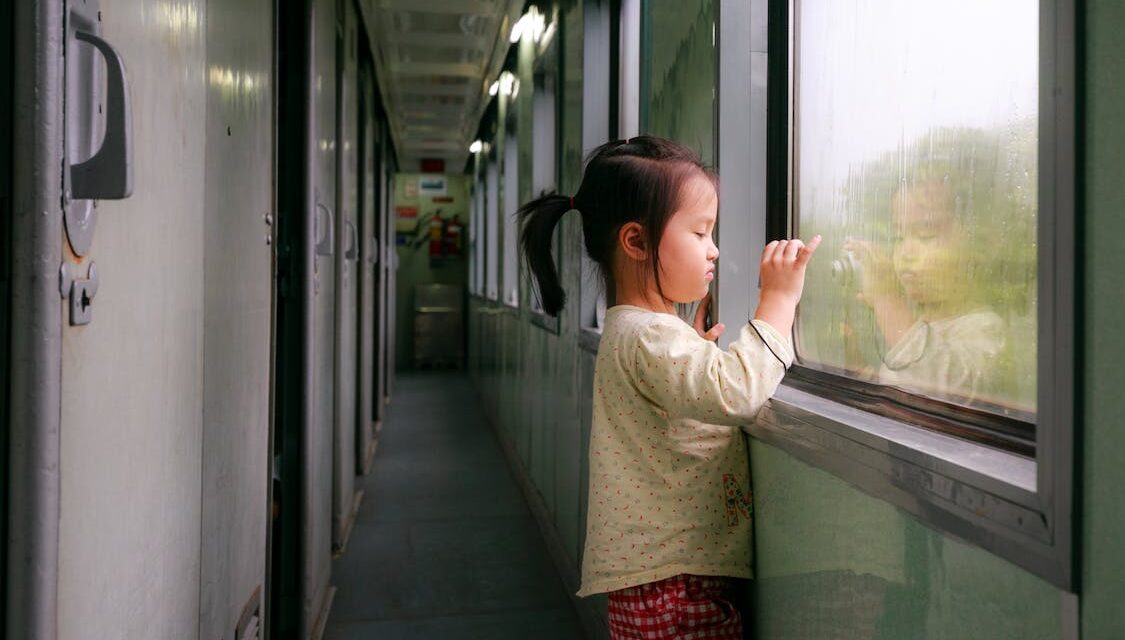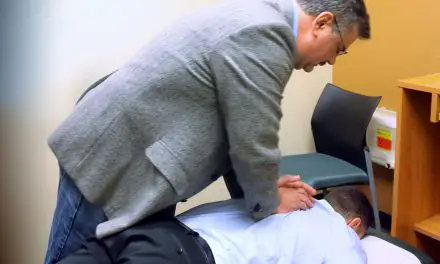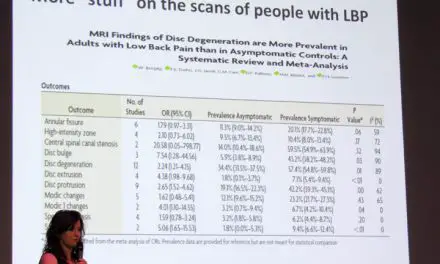If you Google “child neglect” and hit the “News” tab, you would likely find many of such cases reported with parents or caregivers arrested or found guilty in court for child endangerment or neglect.
For more than 20 years, neglect ranks as the most common type of child maltreatment in the U.S. In 2010, about 78% of more than 688,000 child abuse victims were neglected, according to the Children’s Bureau of the U.S. Department of Health and Human Services.
By 2020, the percentage dropped to about 76% of more than 618,000 victims.
Despite the high prevalence, the Center for the Developing Child of Harvard University reported that child neglect “receives less attention in policy and practice.”
While active forms of abuse tend to catch most people’s attention, such as sexual and physical abuse, neglect lies in the shadows outside of the media’s spotlight. This may leave many cases overlooked or ignored by clinicians who work with young patients in chronic pain.
“There’s something less dramatic about [neglect], although the impact has been found to be no less devastating than abuse,” said Dr. Howard Dubowitz, who is the Director of the Center for Families at the University of Maryland School of Medicine in Baltimore, Maryland.
“For example, in adult criminals, when you look back at their childhood, having been neglected is as much a risk factor for later criminality compared to abuse.
“I think the word [neglect] itself doesn’t evoke the same response that abuse does—the notion of a child being abused. The word [abuse] is quite powerful and those people find it repugnant, especially child sexual abuse. The perception is that [neglect] is not quite as serious.”
What is considered child neglect?
Basically, child neglect is the failure to provide a child’s basic physical and emotional needs.
But the United States’ Child Abuse Prevention and Treatment Act (CAPTA) of 1974 expands the definition of child neglect and abuse as:
“At a minimum, any recent act or failure to act on the part of a parent or caretaker, which results in death, serious physical or emotional harm, sexual abuse or exploitation, or an act or failure to act which presents an imminent risk of serious harm.”
From a biological perspective, neglect is “the absence of critical organizing experiences at key times during development,” psychiatrist Bruce D. Perry wrote.
But child neglect isn’t just about our biology: it’s intertwined with society, family, and environment.
In 2002, Dubowitz and his colleagues identified poverty as a major factor in contributing to child neglect among urban preschoolers in Baltimore, Md., but they mentioned that even “better-off” families are not immune from neglect and most poor families aren’t neglectful.
“For many children, living in poverty means exposure to environmental hazards (eg, lead, violence), hunger, few recreational opportunities, and inferior health and health care,” they wrote.
What are the four types of child neglect?
Like other types of child abuse, child neglect has a spectrum that highlights the frequency and intensity. The Center for the Developing Child described four types of child neglect:
Occasional inattention
This describes a situation where a child isn’t getting as much attention as they normally get, but this is sporadic and may require no intervention.
For example, the parent might be too busy and anxious for one day to pay attention to their child’s emotional needs, but most of the time, the child gets regular support from the parent.
Chronic understimulation
This describes the “ongoing and diminished responsiveness” of the parent or caregiver and reduced stimulation from the environment. This can delay physical and psychological development in children.
While the basic physical needs are often met, like housing, food, and clean water, most emotional and cognitive needs aren’t supported.
The Center suggests that the caregivers’ or parents’ needs should be met first along with having high-quality child care and education for the child or children.
Severe neglect in a family context
This level of neglect is where the parent or caregiver doesn’t respond to the child’s needs regularly and could not provide basic physical needs.
Severe neglect in an institutional setting
This is the most severe child neglect scenario where a child is put into an institution (e.g. orphanage) where there aren’t enough caregivers or quality care to build one-on-one relationships.
Children who grew up with such neglect almost always develop severe deficiencies in establishing healthy relationships, language and communication skills, and emotion regulation.
The Center suggests that the best intervention is to remove the child from such an environment as soon as possible.
“Some researchers have written of the ‘neglect of neglect.’ In the maltreatment field, there has been a tendency to focus on physical and sexual abuse, leaving many clinicians and educators with poor understanding of the potential impact of neglect on a young child’s cognitive, language, and behavioral development.
“Neglect may be the most detrimental maltreatment type on brain development.” ~ Spratt et al. (2012)
[Related: Pediatric Pain: How Parents Pass Their Pain to Their Children]
How does neglect affect a child’s development
Regardless of the type of child neglect, any amount of exposure to such abuse can increase the risk of stunting a child’s physical, cognitive, and emotional development.
Not only that, Dubowitz mentioned that abuse and neglect increases a child’s risk of getting heart disease and certain types of cancer.
Researchers in the cancer studies hypothesized that the disruption of the HPA axis, which includes the brain’s hypothalamus, pituitary gland, and adrenal glands, may lower certain immune cell responses that suppress tumors from growing.
Lower height
Child abuse and neglect can suppress normal growth development, including height. In 1983, three psychologists from John Hopkins University examined 32 abused children at their campus’s hospital and found that a majority of them had lower than the average height of typical children.
They cited one 4.5-year-old patient “had a height age of eleven months” and a 16-year-old patient “had a height age of eight years.”
When a child is abused, they describe that the pituitary gland “becomes dormant” and releases very little or no growth hormones. If the abuse continues into puberty, sex hormones are not secreted, which causes a chain reaction of effects in the brain’s hypothalamus, pituitary gland, and adrenal glands (HPA axis) that delay sexual maturation.
Less attention and response to visual cues
Kids who were institutionalized tend to have short attention spans and are less responsive to certain visual cues than those who have never been neglected.
For example, researchers who have worked with young Romanian orphans who were severely neglected found that they were much less likely to smile or show positive emotions when they were shown hand puppets or play peek-a-boo.
Some research finds that brain activity in neglected children is very similar to non-neglected children who were diagnosed with ADHD (attention deficit hyperactivity disorder).

Psychologists can grade young children’s emotional states and attention responses by observing their reactions to hand puppet play and a peek-a-boo game, activities that delight most youngsters. In the upper panels, a baby responds in expected ways. In those below, a child displays less positive emotion and less attention to the normally amusing spectacles before her, responses more common among institutionalized children observed in the Bucharest Early Intervention Project. (Source)
Language development delays
Neglect has been shown to have a significant impact on delaying language development in young children. Extended neglect and abuse can inhibit their ability to express how they feel, solve problems, plan their day, and cooperate with others later in life.
Such language impairment often goes hand-in-hand with various psychiatric disorders, such as depression and emotional regulation. And so, neglected children are more likely to throw tantrums and outbursts than non-neglected children.
What happens to a child’s brain when neglected
Neglect disrupts many parts of a child’s brain during their development, from basic metabolism to higher functions like planning, solving problems, establishing positive relationships with others, controlling their emotions, and maintaining attention.
While there’s not much research that closely examines the relationship between long-term neglect and chronic pain development, adults who were neglected and/or abused as a child are more likely to develop depression, heart disease, and other ailments.
These conditions may likely be tied to different types of chronic pain and having lower pain thresholds.
“Our brains did not evolve to sustain long-term stress. Chronic stress depletes dopamine, stimulates depression and promotes aggression. One way to reduce stress in the brain is to express aggression. Similarly, punishing others stimulates brain states of satisfaction.
“When one is of low status in an unequal system where the stress of life on the margins is unending, violence and punishment can earn status and release tension.” ~ Andrew Faull, ISS Crime Hub
Reduced electrical activities
Neglected children tend to have reduced electrical activities in both hemispheres of the brain, particularly the front and temporal regions.
These areas include the prefrontal cortex (abstract thinking, problem solving), the limbic system (emotional regulation), and memory (hippocampus).
White matter and gray matter differences
The white matter in our brain is made of axons that transmit signals to other neurons, while grey matter is made up of the cell bodies of neurons.
Among severely neglected children, research finds that they have smaller volumes of white and grey matter than non-neglected and non-abused children.
Most of the reduction of grey matter is in the frontal cortex, but not so much in the amygdala and hippocampus.
In a few reported cases, a reduction of white matter may increase the risk of getting depression and similar mental health problems as the children grow up.
Amygdala
The amygdala is an almond-shaped structure in the brain that regulates emotions: the left side is associated with positive emotions while the right side is associated with negative emotions.
Some research shows that boys who had experienced severe child neglect have an enlarged amygdala on their right side. Thus, this may be strongly associated with developing chronic pain later in life.
Memory
Most research show some strong correlation between child abuse and neglect and memory and verbal recall. But specifically, verbal recall impairment seems to be more prevalent among those who have PTSD (post-traumatic stress disorder) than neglect and other forms of abuse.
Some researchers think that such memory impairment ties to changes in the extra secretion of norepinephrine and adrenocorticotropic (ACTH)—stress hormones that respond to the “fight or flight”mode—to the HPA axis.
This triggers a domino effect that reduces neural activities in the prefrontal cortex and the anterior cingulate cortex that are partially responsible for memory and verbal recall.
Although the research says that most of these factors increase the likelihood of having such behaviors and conditions, Dubowitz suggested that we shouldn’t be “overly deterministic.”
Even though these brain changes are part of the problem, he said that our brains are quite plastic—meaning flexible and adaptable—even among adults who suffered a brain injury after a bad car accident.
Some people think that “because X happened at age four, this will necessarily be the outcome at age 14 or 40,” he said. “But we’re much more complicated than that.”
Resources for child neglect
This list will be updated as necessary.
- Dr. Howard Dubowitz is the founder of SEEK (Safe Environment for Every Kid), an evidence-based resource for both clinicians who work with children and families seeking help.
- The International Society for the Prevention of Child Abuse & Neglect (ISPCAN)
- The San Diego Foundation
- Center for Disease Control: Adverse Childhood Experiences
“The greatest damage done by neglect, trauma or emotional loss is not the immediate pain they inflict but the long-term distortions they induce in the way a developing child will continue to interpret the world and her situation in it.” ~ Dr. Gabor Maté, “In the Realm of Hungry Ghosts: Close Encounters with Addiction”
A native of San Diego for nearly 40 years, Nick Ng is an editor of Massage & Fitness Magazine, an online publication for manual therapists and the public who want to explore the science behind touch, pain, and exercise, and how to apply that in their hands-on practice or daily lives.
An alumni from San Diego State University with a B.A. in Graphic Communications, Nick also completed his massage therapy training at International Professional School of Bodywork in San Diego in 2014.
When he is not writing or reading, you would likely find him weightlifting at the gym, salsa dancing, or exploring new areas to walk and eat around Southern California.





